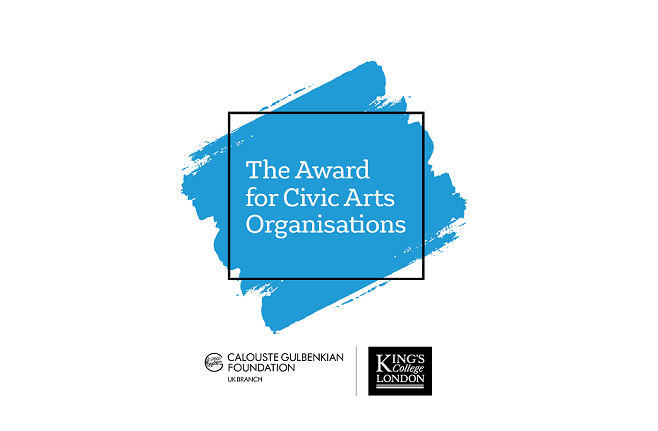Andrew Barnett discusses the new Award for Civic Arts Organisations

Two weeks ago, we launched The Award for Civic Arts Organisations which seeks to highlight some of the inspiring ways in which arts organisations have responded to the COVID pandemic and connected with their communities. It’s an idea that’s been a few months in the planning, but its roots go back some years both to the Inquiry into the Civic Role of Arts Organisations and before.
In some ways, it strikes at the heart of questions with which philanthropists and philanthropic institutions grapple: how to help create the greatest possible public good with finite, and in our case relatively limited, resources? Prizes, challenges and awards are all tools used by funders which can both raise awareness of particular causes and recognise outstanding performers in particular fields.
For the organisations whom we first engaged in the Inquiry into the Civic Role of Arts Organisations which we launched in 2016, it provides an opportunity once again to ask of them: what, and who, are we for? And how can we play a role in supporting those in the vanguard and encouraging others?
“Arts organisations themselves face enormous disruption which the recovery funding is only intended to provide short-term stability.”
These questions – for us and those we support – are complicated by the pandemic we are now living through. Many have experienced challenges in their lives greater than the more fortunate among us can begin to imagine. Arts organisations themselves face enormous disruption which the recovery funding is only intended to provide short-term stability. From an early stage, we decided that our resources were too limited to have any significant immediate impact in helping individuals and communities hit hardest. I first wrote about this in May, when I set out how the Foundation was responding to the pandemic.
Our strong feeling, born out in the research undertaken by Common Vision, is that despite the very real challenges faced by many arts organisations, there are green shoots that show how they might ‘grow back better’. And we wanted to shine a light on these endeavours, encouraging them to embed and share what they had learned. In doing so, we are also hoping that light reveals a route-map for others: seeking an impact on the sector as a whole in the way the Museum Prize has done over its 16 years.
Looking back on the Museum Prize, I observe a step change in the performance of the museum sector. It has incentivised museums and galleries to examine their practices with an impact that lies well beyond those who won or were shortlisted. Museums today are, on the whole, considerably more effectively run, with a sense of distinctive vision and a real sense of priority placed on the communities they serve. All credit to Art Fund for supporting this initiative after our initial support.
“Awards can bring a benefit both to the receiving organisation and have a galvanising effect on whole groups of organisations keen to be showcased alongside their peers.”
There are evident downsides to prizes, challenge funds and awards: recognising a few over many and doubts about the intentions of sponsors. But they can bring a benefit both to the receiving organisation and have a galvanising effect on whole groups of organisations keen to be showcased alongside their peers. Amidst the gloom we experience as arts organisations face their second period of lockdown, we wanted to platform approaches from organisations that are modelling what it means to have a civic role and give impetus to others as they look ahead.
The Award is part of a suite of initiatives being supported by the Foundation in response to the pandemic. It is focusing on strengthening the arts and cultural sector to respond to urgent community needs, prioritise relevance, and become more inclusive and impactful.
The Calouste Gulbenkian Foundation (UK Branch), in partnership with King’s College London, have launched a new award that celebrates the civic role of arts organisations in society. Find out more.
